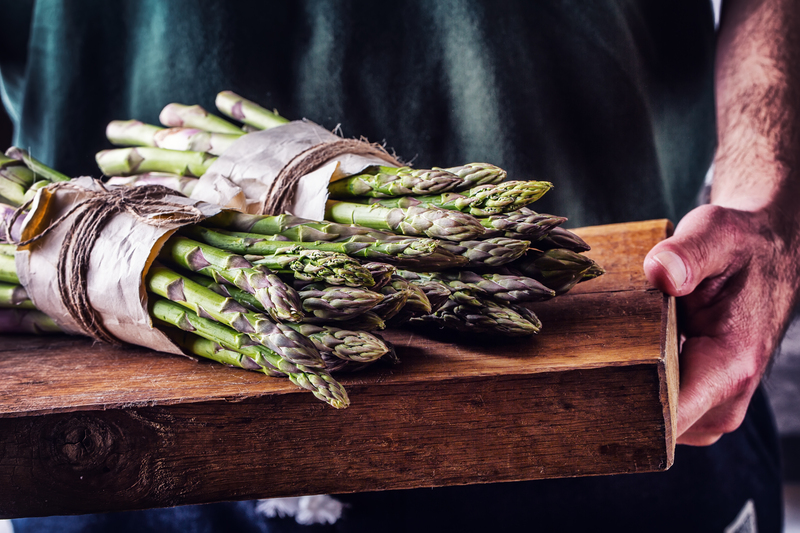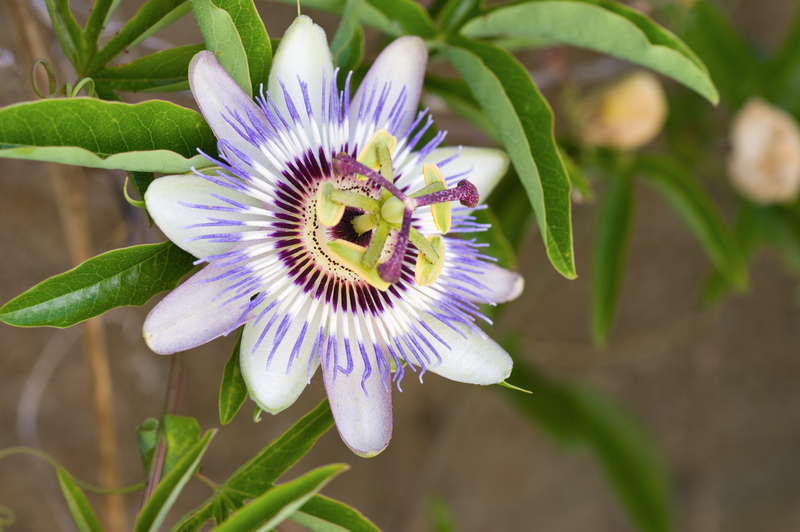Advanced Methods for Hedge Shaping and Embellishment
Posted on 11/09/2025
Advanced Methods for Hedge Shaping and Embellishment
Hedges are more than just natural fences--they're living works of art, breathing life and structure into any landscape. For those looking to level up from basic trimming, advanced methods of hedge shaping and embellishment open up a world of possibilities, combining artistry with horticultural science. This comprehensive guide delves into expert techniques, innovative practices, and creative ideas for transforming standard hedges into show-stopping features that elevate every garden style.
Understanding the Principles of Advanced Hedge Shaping
Before diving into advanced hedge embellishment, it's vital to understand the foundational principles that underpin successful shaping:
- Species Selection: Not all shrubs are suited for intricate forms. Boxwood, yew, privet, beech, and hornbeam are among the best choices.
- Growth Habit Awareness: Recognize whether your hedge plant grows fast, slow, upright, or sprawling--this influences your shaping strategy.
- Maintenance Commitment: Advanced shapes require regular upkeep. Factor in time and resources before committing.
Patience and precision are essential. Advanced hedge shaping techniques may take years to reach their full potential, but the rewards are striking and enduring.

Expert Topiary: Sculpting Hedges into Living Art
Topiary--the art of sculpting woody plants into decorative forms--is among the most recognizable advanced techniques for hedge embellishment. Topiary ranges from classical geometric forms to whimsical animals and abstract patterns.
Steps to Create Topiary Hedges
-
Step 1: Choose the Right Plant
Dense, small-leaved evergreens like boxwood (Buxus sempervirens) and yew (Taxus baccata) are ideal for clean lines and intricate designs. -
Step 2: Select a Design
Start simple--spheres, cubes, cones--before progressing to complex animals or custom forms. -
Step 3: Use Frames or Templates
For beginners, wire frames guide your cuts and help maintain proportions. Custom frames support more elaborate embellishments. -
Step 4: Pruning Techniques
Employ sharp, clean shears. Cut lightly and frequently during the growing season, refining shapes bit by bit. -
Step 5: Ongoing Maintenance
Maintain the shape with regular trimming. Remove any errant shoots or irregular growth promptly.
Topiary hedges serve as focal points, hedging features, borders, or creative dividers--truly versatile in any landscape.
Cloud Pruning: The Japanese Niwaki Method
Cloud pruning or Niwaki is a symbolic and refined hedge sculpting style inspired by Japanese gardens. Instead of rigid shapes, the technique mimics natural cloud forms, resulting in elegant and ethereal silhouettes.
How to Master Cloud Pruning
- Select Flexible Species: Yew, boxwood, and holly are commonly used for their ability to take on rounded forms.
- Create "Clouds": Identify major branch clusters and prune away inner growth to leave rounded pads or "clouds."
- Maintain Visual Balance: The arrangement of clouds should look natural and appear to "float" at different heights and orientations.
- Refine Over Time: Let the plant grow between trims, gradually exaggerating the cloud shapes each season.
Embracing Niwaki hedge artistry can add sophistication and a contemplative vibe to modern and traditional gardens alike.
Espaliered Hedges: Living Green Screens
Espalier is a centuries-old method of training plants to grow flat against a surface or along a framework, resulting in living green screens or intricate patterns.
Steps for Successful Espalier Hedging
- Install a Support Structure: Sturdy trellises or wire systems provide a guide for new growth.
- Train Primary Branches: As the plant matures, select strong shoots and tie them horizontally or diagonally according to your pattern.
- Prune Regularly: Keep side shoots short to maintain a single plane of foliage and reinforce the flat effect.
- Experiment with Patterns: Grids, fans, diamonds, and even intricate designs are possible.
Espaliered hedges maximize space in small gardens, mask fences or walls, and add a touch of artistry to any outdoor space.
Innovative Hedge Embellishment Techniques
Beyond shape and form, hedge embellishment can include color, texture, and function, using creative approaches to heighten visual and aesthetic interest.
1. Mixed Species Planting
- Create a tapestry hedge by intermingling different species or cultivars--with contrasting leaf shapes, sizes, or colors.
- Combine flowering and evergreen varieties for seasonal variation and year-round interest.
2. Variegated and Colored Foliage
- Choose shrubs with gold, silver, or red-tinted leaves for dynamic color blocking and striking contrasts.
- Use variegated euonymus, golden privet, or photinia for bold patterns.
3. Layered and Tiered Hedges
- Create depth by planting hedges of different heights in parallel rows--low, mid, and tall--using species that harmonize together.
- Terrace effect can be achieved in sloped gardens, guiding the eye and adding drama.
4. Incorporation of Flowering Climbers
- Intertwine clematis, climbing roses, or honeysuckle into the structure of hedges for added blooms and fragrance.
- Ensure chosen climbers are compatible with the hedge species.
5. Artistic Cutouts and Negative Space
- Create bold statements by selectively removing portions of the hedge to form arches, windows, or silhouettes.
- Contrast negative-space cutouts with solid forms for maximum visual impact.
Tool Selection and Care
The right equipment is crucial for advanced hedge shaping. Dull or inappropriate tools can damage plants and distort intricate designs.
- Precision Shears: For fine work, use topiary scissors and hand shears with sharp, narrow blades.
- Electric or Battery-Powered Trimmers: Suitable for long, straight runs but less effective for fine detail.
- Loppers and Pruning Saws: For removing thicker branches when establishing initial shapes.
- Wire Frames and Guides: Essential for consistency in complex or geometric forms.
Regular tool maintenance--cleaning, sharpening, and oiling--not only extends tool life but also supports plant health by ensuring clean cuts.
Timing and Techniques for Advanced Hedge Trimming
Trimming at the correct time helps hedges recover quickly and minimize stress:
- Evergreen hedges: Usually trimmed in late spring or early summer, with touch-ups in mid-summer.
- Deciduous hedges: Best pruned in late winter or early spring before new growth begins.
- Fast-growing species: May need two to three trims per season to maintain advanced shapes.
Always trim on a dry, overcast day to reduce stress and avoid sun scorch on freshly cut foliage.
Integrated Lighting and Decorative Elements
For even greater hedge enhancement, integrate elements such as garden lighting, decorative frames, and structural features:
- LED uplights highlight forms at night, adding drama and texture to advanced shapes.
- Metal or wooden cutout frames can accentuate geometric forms or serve as seasonal accent features.
- Garden ornaments--statues, water features, or bird baths--complement and draw attention to intricate hedge forms.
Advanced Maintenance: Feeding, Health, and Longevity
Sustaining complex and embellished hedge forms requires conscientious care:
- Feed annually with balanced, slow-release fertilizers to support dense, healthy foliage.
- Mulch regularly to conserve moisture and suppress weeds at the hedge base.
- Inspect for pests such as aphids or scale insects, and treat promptly to prevent dieback.
- Address dead or diseased branches immediately, reshaping as needed to conceal gaps.
- Monitor soil health, drainage, and compaction--especially in urban or high-traffic gardens.

Showcasing Advanced Hedge Artistry: Case Studies
Some of the world's most famous gardens--including the chateaux of France, English country estates, and Japanese temple grounds--use advanced hedge shaping techniques as signature features:
- Chateau de Villandry, France: Intricate boxwood knot gardens and spiral parterres showcase centuries-old topiary craft.
- Levens Hall, England: Home to three centuries of massive, whimsical yew topiary--often called "the best in the world."
- Kenroku-en Garden, Kanazawa, Japan: Exemplifies cloud pruning in stately pines and clipped hedges, melding the manmade with the natural.
Take inspiration from these heritage gardens, while blending advanced methods for modern living spaces and personal taste.
Conclusion: Transforming Hedges with Advanced Shaping Techniques
With the right knowledge, attention to detail, and creative vision, hedges become living sculptures, framing the garden and inviting admiration. Advanced hedge shaping and embellishment merges tradition and innovation--satisfying for hobbyists and professionals alike.
- Experiment with topiary, cloud pruning, and espalier to match your garden's character.
- Incorporate mixed species, color, and negative space for unforgettable visual interest.
- Invest in proper tools, maintenance, and feeding for long-lasting results.
Whether you aim for formal elegance, whimsical whimsy, or natural tranquility, the possibilities for advanced hedge shaping and embellishment are virtually limitless. Embrace these methods and watch your garden transform into a masterpiece of living design.

